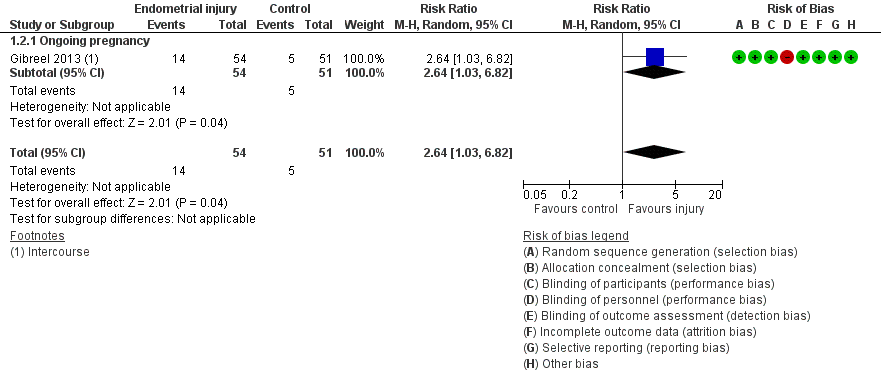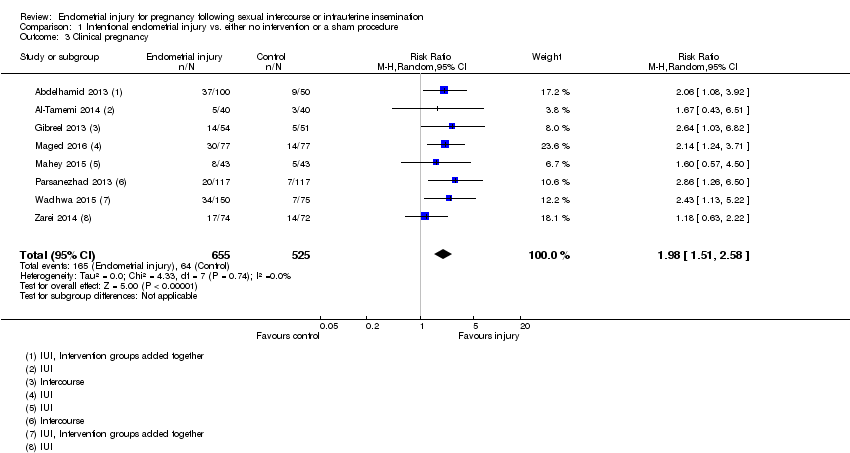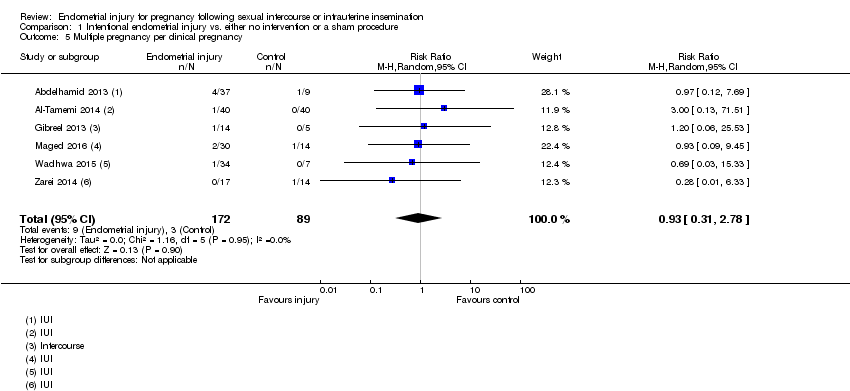Contenido relacionado
Revisiones y protocolos relacionados
Bich Ngoc Bui, Sarah F Lensen, Ahmed Gibreel, Wellington P Martins, Helen Torrance, Frank J Broekmans | 24 octubre 2022
Sarah F Lensen, Sarah Armstrong, Ahmed Gibreel, Carolina O Nastri, Nick Raine-Fenning, Wellington P Martins | 10 junio 2021
Charalampos S Siristatidis, Eleni Sertedaki, Vasilios Karageorgiou, Dennis Vaidakis | 14 agosto 2020
Esmée M Bordewijk, Marleen Nahuis, Michael F Costello, Fulco Van der Veen, Leopoldo O Tso, Ben Willem J Mol, Madelon van Wely | 24 enero 2017
Charalampos S Siristatidis, Eleni Sertedaki, Dennis Vaidakis, Christos Varounis, Marialena Trivella | 16 marzo 2018
Maartje Cissen, Alexandra Bensdorp, Ben J Cohlen, Sjoerd Repping, Jan Peter de Bruin, Madelon van Wely | 26 febrero 2016
Mohan S Kamath, Richard Kirubakaran, Sesh Kamal Sunkara | 24 enero 2020
Reuben Olugbenga Ayeleke, Joyce Danielle Asseler, Ben J Cohlen, Susanne M Veltman‐Verhulst | 3 marzo 2020
Lidija Rakic, Elena Kostova, Ben J Cohlen, Astrid EP Cantineau | 14 julio 2021
Baris Ata, Ahmed M Abou‐Setta, Ayse Seyhan, William Buckett | 28 febrero 2018
Respuestas clínicas Cochrane
Jane Burch, Charalampos Siristatidis | 19 septiembre 2019





















